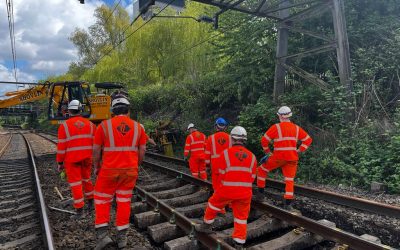Advanced Safety Protocols in Modern Railways
The railway industry, a cornerstone of global transportation, has always prioritized safety.
With the advent of modern technology and the increasing complexity of railway networks, advanced safety protocols have become indispensable.
This article delves deep into the sophisticated safety measures employed by modern railways, ensuring that millions of passengers reach their destinations safely every day.
The Imperative for Advanced Safety
Railways, given their vast networks and high-speed operations, present unique safety challenges. A minor oversight can lead to significant consequences. Hence, as railway operations have modernized, so have the safety protocols, evolving from manual checks to automated systems powered by cutting-edge technology.
1. Communication-Based Train Control (CBTC):
Overview: CBTC systems use wireless communication to relay real-time data between trains and control centers. This allows for precise control of train movements, speeds, and spacing.
Benefits:
-
- Real-time Monitoring: Provides real-time updates on train locations, speeds, and potential obstacles.
- Efficiency: Allows trains to operate closer together, increasing network capacity without compromising safety.
- Flexibility: Adapts to changing network conditions, ensuring optimal train operations.
2. Positive Train Control (PTC):
Overview: PTC systems can automatically stop or slow down a train if it detects a potential collision, derailment, or other safety hazards.
Benefits:
-
- Collision Prevention: Automatically intervenes if two trains are on a collision course.
- Speed Regulation: Ensures trains don’t exceed safe speeds, especially in zones with maintenance or other restrictions.
- Protection Against Human Error: Acts as a safety net against potential oversights by train operators.
3. Automated Track Inspection:
Overview: Modern railways use automated track inspection systems, equipped with sensors and cameras, to detect track anomalies.
Benefits:
-
- Early Detection: Identifies track defects before they pose a safety risk.
- Comprehensive Analysis: Uses data analytics to assess track health and predict future maintenance needs.
- Cost-Efficiency: Reduces the need for manual inspections, leading to cost savings.
4. Advanced Signaling Systems:
Overview: Modern signaling systems use digital technology to control train movements, ensuring safe distances between trains and preventing collisions.
Benefits:
-
- Real-time Coordination: Coordinates train movements in real-time, optimizing traffic flow.
- Scalability: Can handle increased train traffic without compromising safety.
- Integration: Seamlessly integrates with other safety systems for holistic safety management.
5. Driver Assistance Systems:
Overview: These systems assist train drivers by providing real-time data on track conditions, upcoming signals, and potential hazards.
Benefits:
-
- Enhanced Awareness: Keeps drivers informed about track conditions and potential challenges.
- Fatigue Management: Alerts drivers if signs of fatigue or inattention are detected.
- Emergency Protocols: Provides step-by-step guidance during emergencies, ensuring optimal response.
6. Passenger Safety Protocols:
Overview: Modern railways prioritize passenger safety both onboard trains and at stations. This includes emergency communication systems, real-time monitoring of train interiors, and advanced fire suppression systems.
Benefits:
-
- Immediate Response: Enables quick response to onboard emergencies.
- Passenger Communication: Keeps passengers informed during emergencies, guiding them on safety protocols.
- Station Safety: Uses surveillance systems and emergency response protocols to ensure passenger safety at stations.
7. Cybersecurity Measures:
Overview: As railways become more digitized, protecting their systems from cyber threats has become crucial. Modern railways employ advanced cybersecurity protocols to safeguard their operations.
Benefits:
-
- Data Protection: Ensures the integrity and confidentiality of operational data.
- System Uptime: Protects against cyberattacks that could disrupt railway operations.
- Continuous Monitoring: Uses real-time monitoring to detect and respond to potential cyber threats.
Conclusion:
The advanced safety protocols in modern railways underscore the industry’s unwavering commitment to safety.
As railway networks continue to expand and technology evolves, these safety measures will undoubtedly become even more sophisticated.
The integration of AI, IoT, and other emerging technologies promises a future where railway travel is not only efficient and convenient but also safer than ever before.
It’s a testament to the relentless pursuit of excellence in the railway industry, ensuring that passengers can place their trust in trains, knowing they’re in safe hands.




